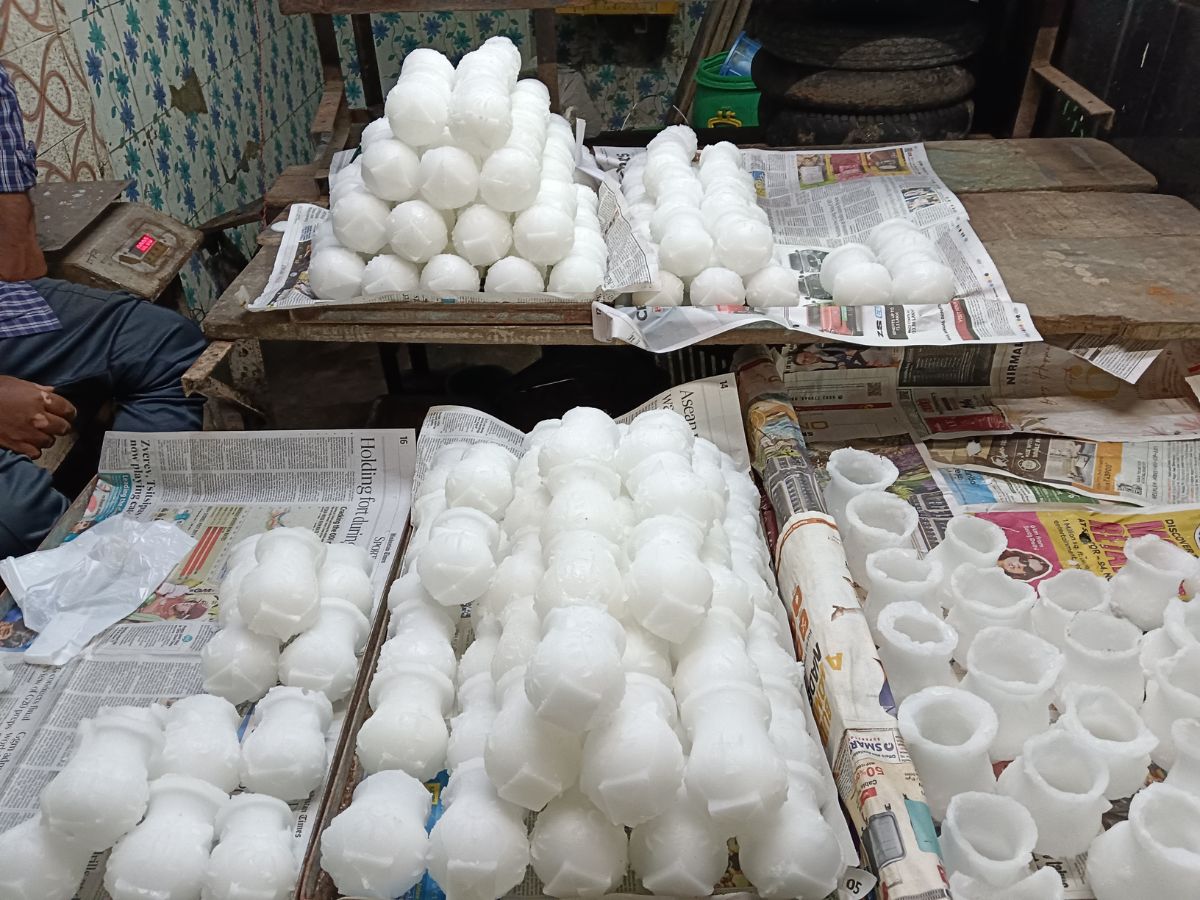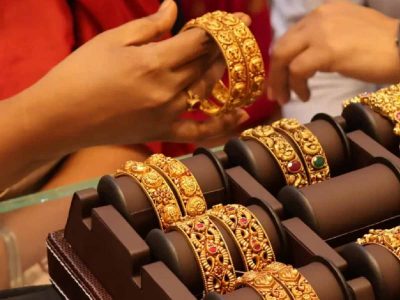As Diwali approaches, the markets of old Delhi turn into a vibrant spectacle. Shops are festooned with twinkling fairy lights; vibrant pots grace the makeshift stalls; and strings of candles, which have replaced firecrackers over the years, conjure an enchanting ambiance.
Amid this kaleidoscope of colours, the stark white sugar toys – Mithai Ke Khilone – offer a glimpse into celebrations of a bygone era. They harken back to a time when Diwali was unimaginable without these sweets.
Today, these sugar figurines, often moulded into shapes of animals like horses, elephants, and peacocks, remain a cherished tradition, though their prevalence has diminished. They are now acquired primarily for Diwali pooja, in quantities far smaller than what used to be.
Sunil Kumar, the owner of a sweet shop in old Delhi’s Sitaram Bazaar, reminisces about how these delectable treats were not just reserved for Diwali gifts but were once the primary indulgence of the festive season.
“They used to be a common sight here. In this market alone, you would see many shops selling these mithai for weeks during the festival. Today, there are only a few shops that sell them. They keep these mithai only because it is customary to offer these sweets in pooja,” he says.
Sunil, who is selling sugar karva – pots crafted from sugar for Karva chauth rituals, plans to re-stock sugar toys once the Karva chauth festivities conclude.
“Take these karva, for instance; people used to purchase them in auspicious quantities like 51, 101, and 121. Now, the number has dwindled to 9, 11, and 21 karvas on a good day,” notes Sunil.
Among the assortment of sugar-based sweets, including batasha (sugar candy) and kheel (sugary rice pops), Sunil’s shop boasts a sugar hatri, a house-shaped structure popular during Diwali celebrations.
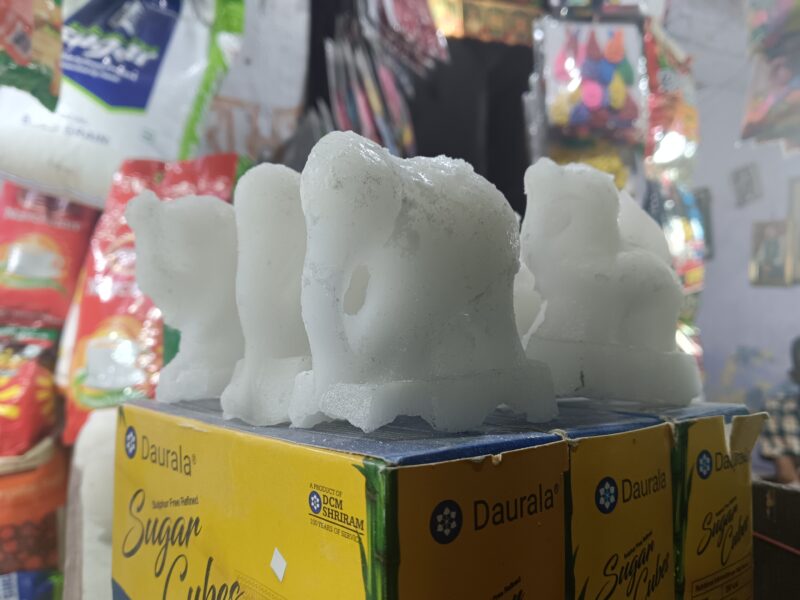
While hatri would gleam with silver and gold plating once upon a time, but got confined to mud and clay over the years, it can also be obtained as a sugar delectable.
The reason for this, says Sunil, is because of the love Indians have for their sweets.
“In the olden days, the primary source of sweet was khand (a type of unrefined sugar obtained from sugarcane) making these sugar figurines delectable. Now that people have started to become more health conscious or have shifted to chocolates and other fancy sweet items, their popularity has reduced. I would say that it is a dying tradition,” he laments.
Oral historian Sohail Hashmi says that these sugar figurines must have become popular before the introduction of refined sugar.
“Since these items are largely made of khand, which is heated at a temperature where it can finally be moulded into different shapes, it may be a possibility that they became popular before the introduction of refined sugar.”
The key markets of khilona mithai, Hashmi says, are scattered throughout old Delhi, including Khaari Baoli, and old villages of the city like Najafgarh.
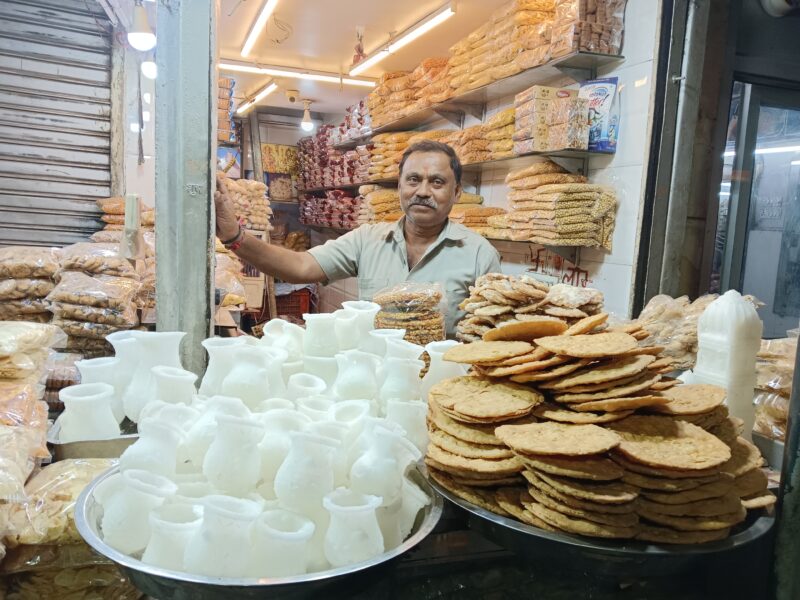
“They were popular in the old city. Once the city expanded, people started to sell these sweets in different parts of the city,” he says.
Majority of supply of these sugar figurines comes from western Uttar Pradesh, especially towns where the population of Rohilla Pathans is significant, Hashmi says.
Sunil concurs, “I would say that the backbone of these sugar delectables in Delhi are artisans from Uttar Pradesh, especially towns such as Sambhal, Bijnor, and Modi Nagar.”
Azam Khan, whose family owned two sugar mills that also produced mithai ke khilone in Sambhal, explains the process of making them.
“Usually, this is made by artisans who are experts in the art of making batasha because they know about the required concentration,” he says.
“I have seen that if the proper concentration is not achieved, the batashay — or the khilone — tend to break once they are dried.”
“Khand and water, initially blended thoroughly and heated in a spacious vessel, undergo constant stirring to achieve the desired concentration. Once the mixture attains optimal viscosity, it is meticulously poured into intricately crafted animal-shaped wooden mould. In case of batasha, they are dropped on a slippery carpet,” he says.
Azam’s family decided to shut its business after the lockdown because of the decrease in the demand of khilona and batasha. The customer-base was largely in villages of western Uttar Pradesh and some parts of Delhi and Meerut.
“We used to make khilone only during the Diwali festival,” he says.
“Our business was largely of batasha and other sugar items. Once the demand declined, we shut down one mill. After the Covid lockdown, the other mill was also shut.”
Apart from decline in demand, Azam says, other reasons include the start of production of such products in villages where their customers were largely present.
“People started to make them locally. So, there was no reason to continue the business, even if it was a traditional business of our family,” he says.
Vijay Seth, a resident of Moti Nagar in west Delhi, is fond of khilona mithai because of the memories associated with it.
“In a way, it also shows the changing nature of celebrations among people. It was the main gifting item in our times,” he says.
He emphasises that the sweet has seen decline in demand, but not popularity.
“People do not share it often. They would instead share chocolates or a sweet from Haldiram’s. But their religious and traditional value remains the same. Even if you go to the posh locality of south Delhi, it will be present because it is customary to include it in Diwali pooja,” he says.
Chef Vaibhav Bhargav also speaks on similar lines.
“Over the years, the families have become more nuclear, and this is also the reason why we are losing out on traditions so much. If you see the set-up of nuclear families even during Diwali, it is very minimalistic. So, we are losing out on this tradition of sugar mithai slowly,” he says.
Vaibhav, who works as a partner chef at Cho restaurant, says that people should start speaking about khilona mithai more often. Since the demand from consumers has shifted to healthy delectables, chefs and brands have started to work in the development of these areas. However, as there is no demand for khilona mithai, Vaibhav says, not much has been done to protect the identity of the sweet.
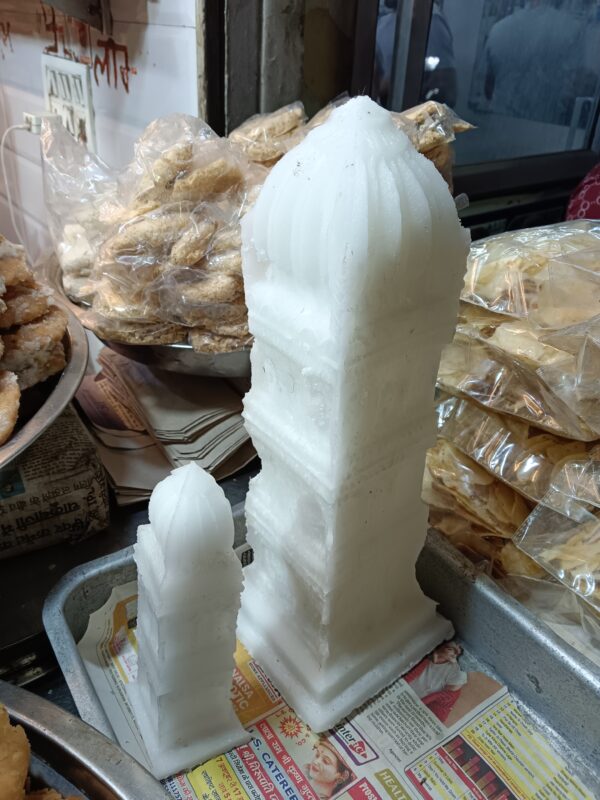
“It’s also about the technique of making it. If it was just about sugar-free or sugarless, chefs can come up with something. But in khilona mithai, you need sugar to properly mould it,” he says.
Vaibhav grew up in old Delhi’s Daryaganj and had these sweets at home during the Diwali festival.
“In my home, once the pooja was done, we used to consume it with tea, or convert it into sugar syrup. So, in my opinion, not much has been done on it because in the end, you know, it is treated just as sugar,” he says.
“However, to keep it alive, we as chefs must do something to retain its identity,” he adds.

